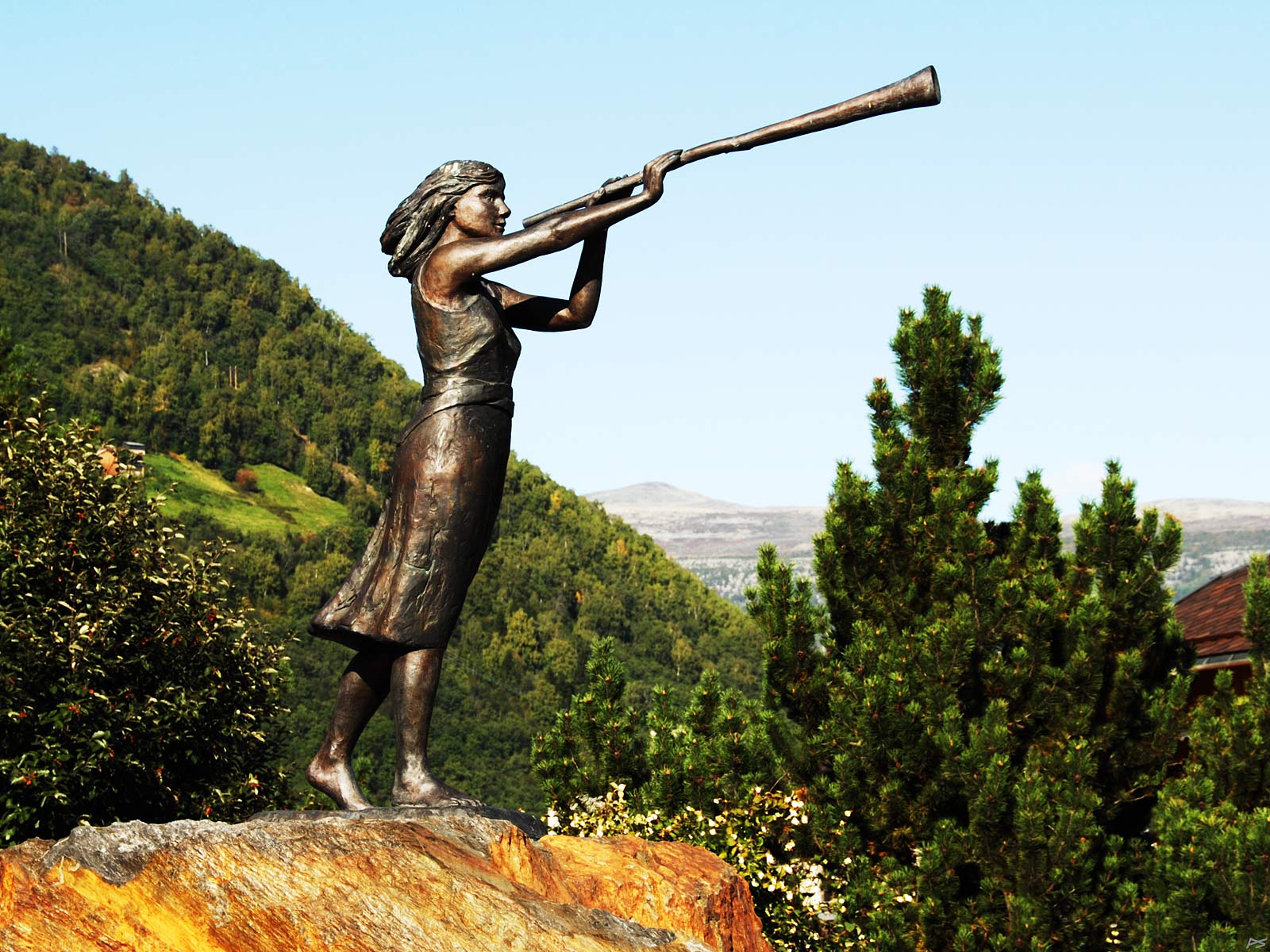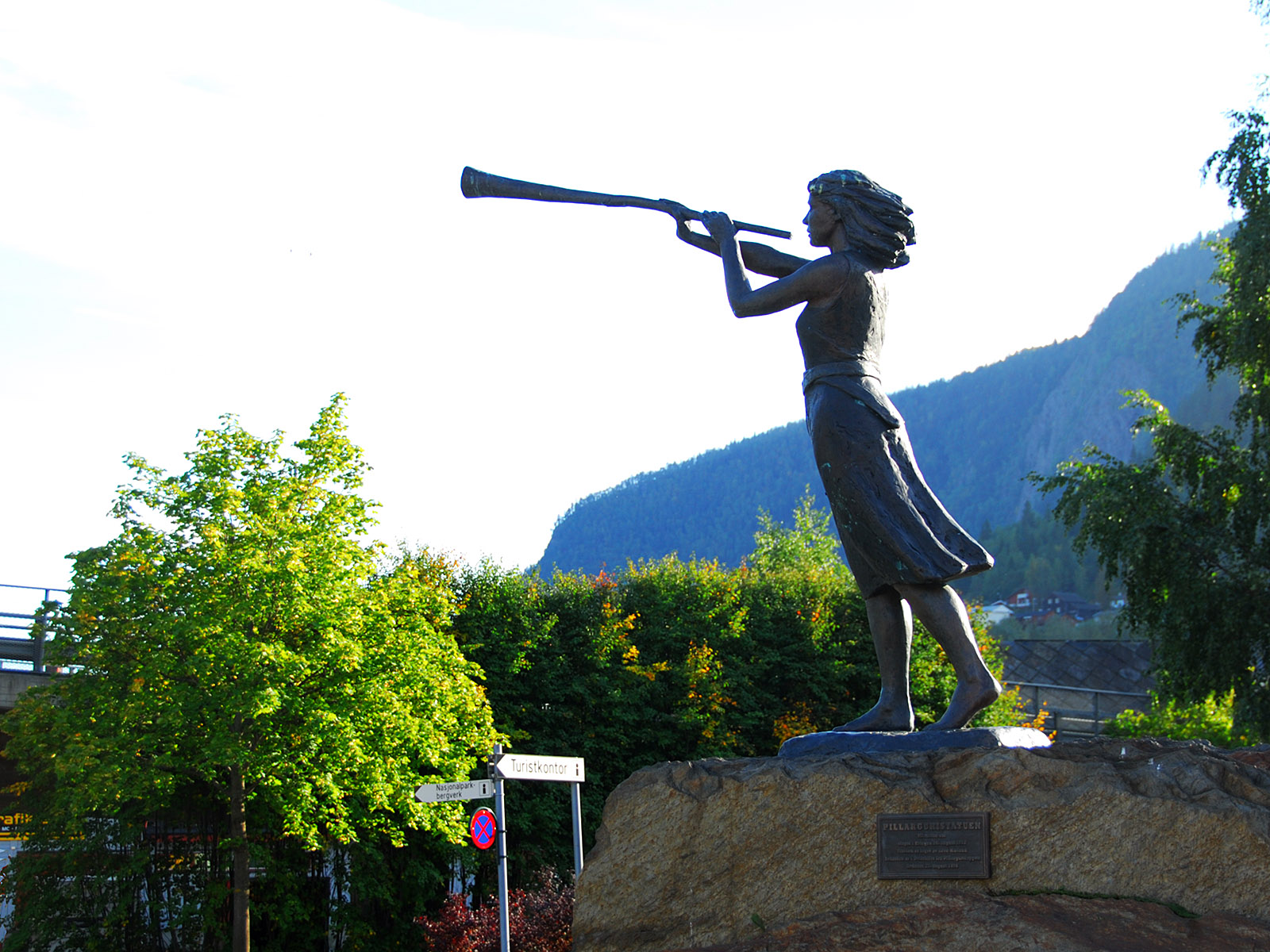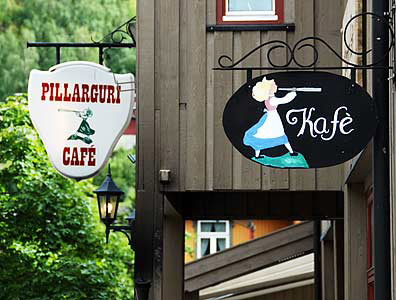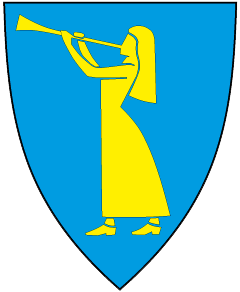
Pillarguri, statue by Arne Mæland (1998) in the small town Otta in the municipality Sel, Gudbrandsdalen. In 1612 an army of Scottish mercenaries was marching southwards through the valley Gudbrandsdalen, heading for Sweden. At Kringen, less than two kilometres down the valley from Otta, an ad hoc army of local farmers was waiting for them and defeated the Scots. A legend says that on the other side of the river stood a young girl, Pillarguri (or Prillarguri), and blew the signal to launch the attack. Another version says that her role was to distract the Scots. And some say that she played the then common billy goat's horn. Who knows – after four hundred years. In our schools this story is part of the history lessons, and the children are proud of the slaughter of the Scotsmen. Yah!
(2008-09-13)

Pillarguri seen from the opposite side
(2014-09-13)

The Pillarguri café in Otta. The locals use it a lot. Here you may find local specialities. It has an outdoor section with a roof, sheltering walls and infrared heaters.
The main railroad Oslo–Trondheim runs through the town, on the street level, with crossing gates, of course.
Close to the town the river Otta from the west joins the river Lågen flowing southwards through the main valley, Gudbrandsdalen. In the warmest part of the summer, when the glaciers are melting, the river Otta is blue-green from minerals, which is quite striking where the two rivers join.

The Sel coat of arms
